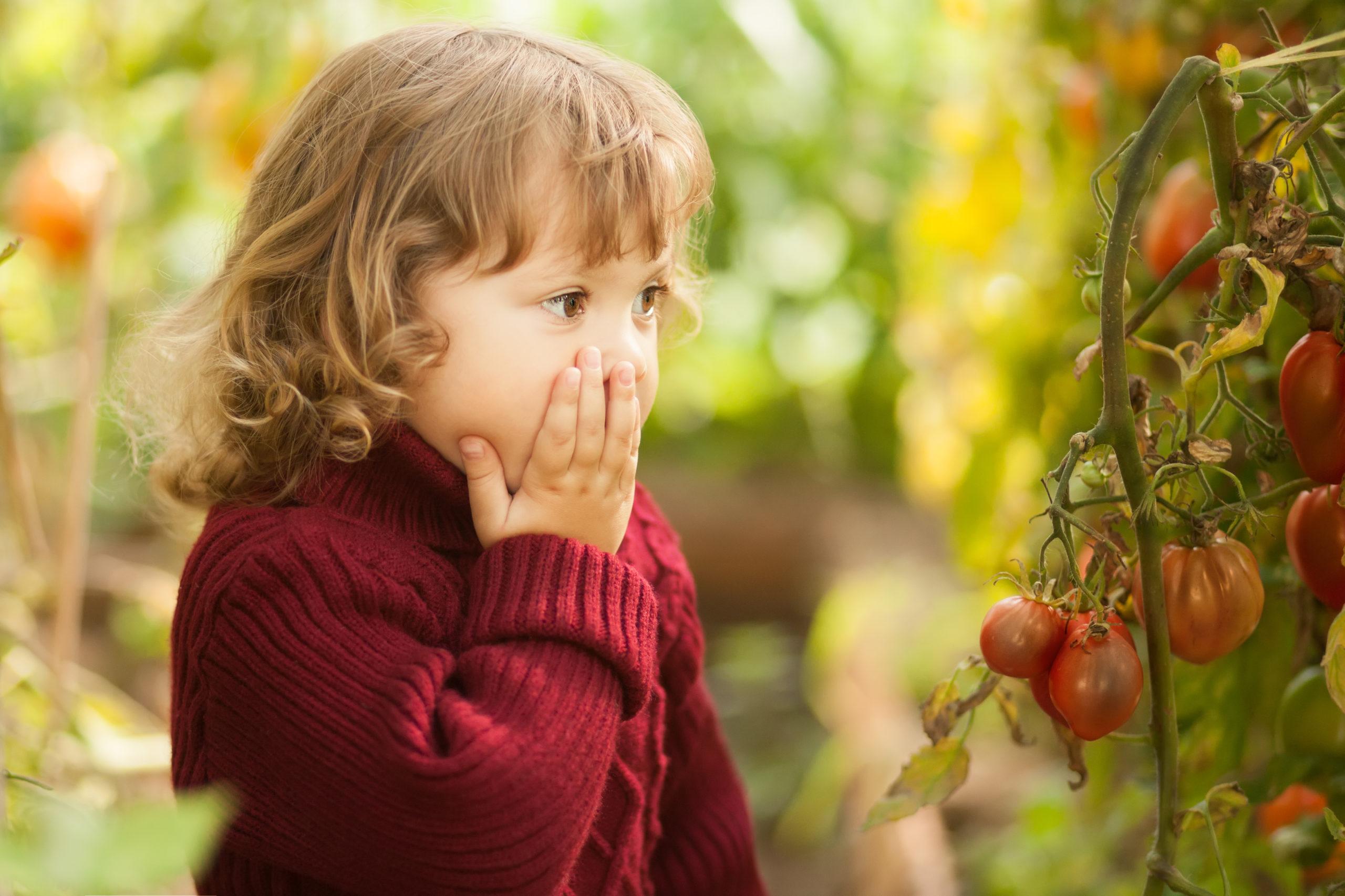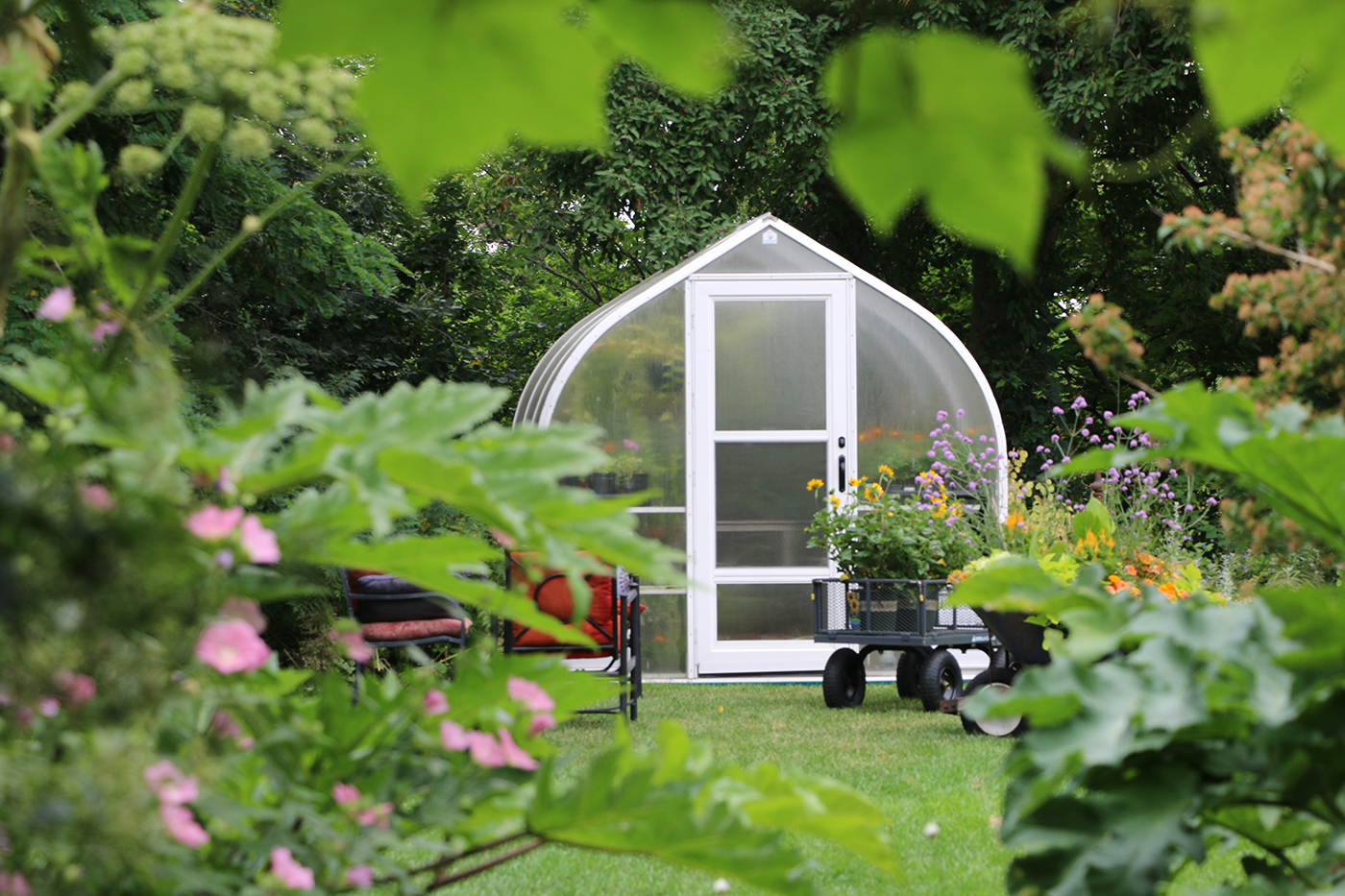Ever been to Dick’s Corner at Tagawas? That’s Command Central for our Garden Advisors… the folks who offer guidance on making your yard and garden the best it can be… and help you figure out what went wrong when things don’t go as planned.
I keep in close touch with these good people, especially this time of year when a long, hot summer can trigger problems that make gardening less fun and less productive than we all want it to be. Here are some of the late-summer challenges our Tagawa guests tell us they’re struggling with now.
“My tomatoes don’t have any fruit!”
I feel your pain. I’m growing eleven tomato plants for a household of two. I really like fresh tomatoes, but they’re just not producing! As it happens, I know why. See anything missing on this plant?
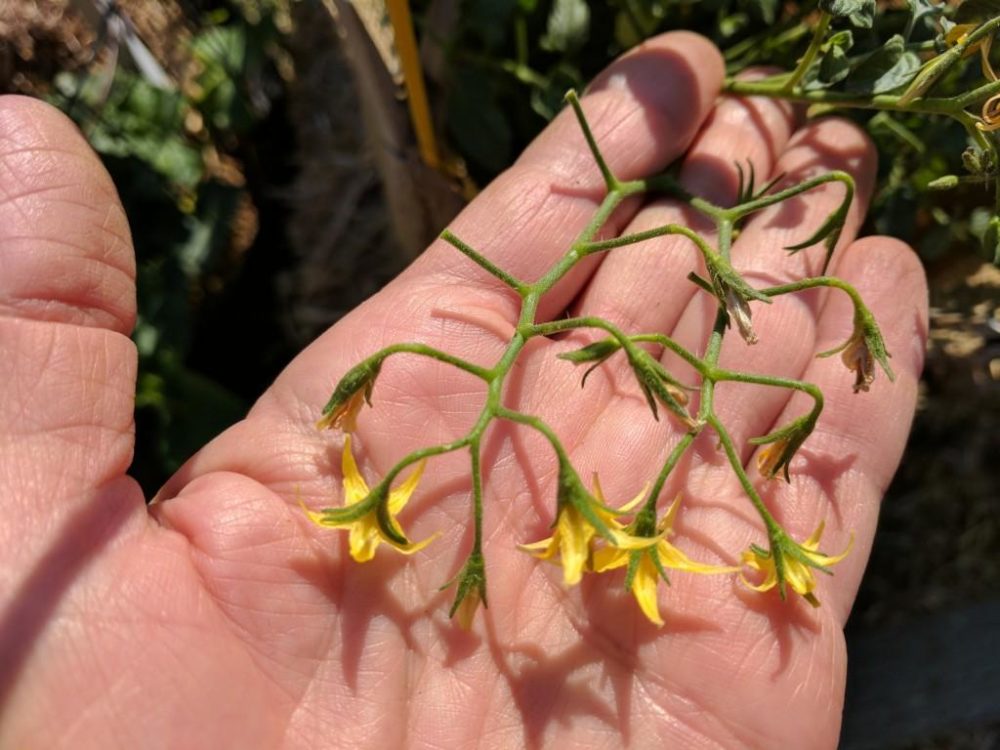
Plants look healthy, but there are few if any blossoms. You can see the little stems that once held a blossom, but the flower is nowhere to be seen. This condition is call “blossom drop.”
Tomatoes are definitely sun- and heat-loving plants… but only to a point. Daytime temperatures approaching 90 degrees and nighttime temps below 60 can damage tomato pollen. When the flowers can’t be properly pollinated, they’re useless and fall off, leaving the tiny stems behind.
Giving plants some light shade during the hottest parts of the afternoon can help. Growing a vining crop next to the tomatoes or rigging a canopy of 30% shade cloth can lower temps around the plants during the hottest part of the day.
I also make a point to mulch around my tomatoes with two to three inches of loose straw. This helps to keep the soil from absorbing excess heat, which can reflect back onto the plant. As a bonus, the mulch can reduce problems with fungal diseases that splash onto the plant’s lower leaves when they’re watered.
“Feed me!”
That’s our plants talking, and we need to listen! Even though I know I’ll be growing my tomatoes in good soil, I always mix some starter food like Osmocote into the planting hole. But the fertilizing routine can’t stop there. I’m guessing I’m not the only one who got distracted with a busy summer and didn’t feed them as consistently as I should have. Come mid-summer, their poor nutrition really started to show. Once I got back on track with regular feeding, my plants perked up noticeably. Yea!
It’s definitely not too late to correct your plants’ nutritional needs, but note: Be careful of using a fertilizer with too much nitrogen. Nitrogen makes for healthy green foliage, but too much nitrogen can produce beautiful leafy plants but far fewer flowers and fruit.
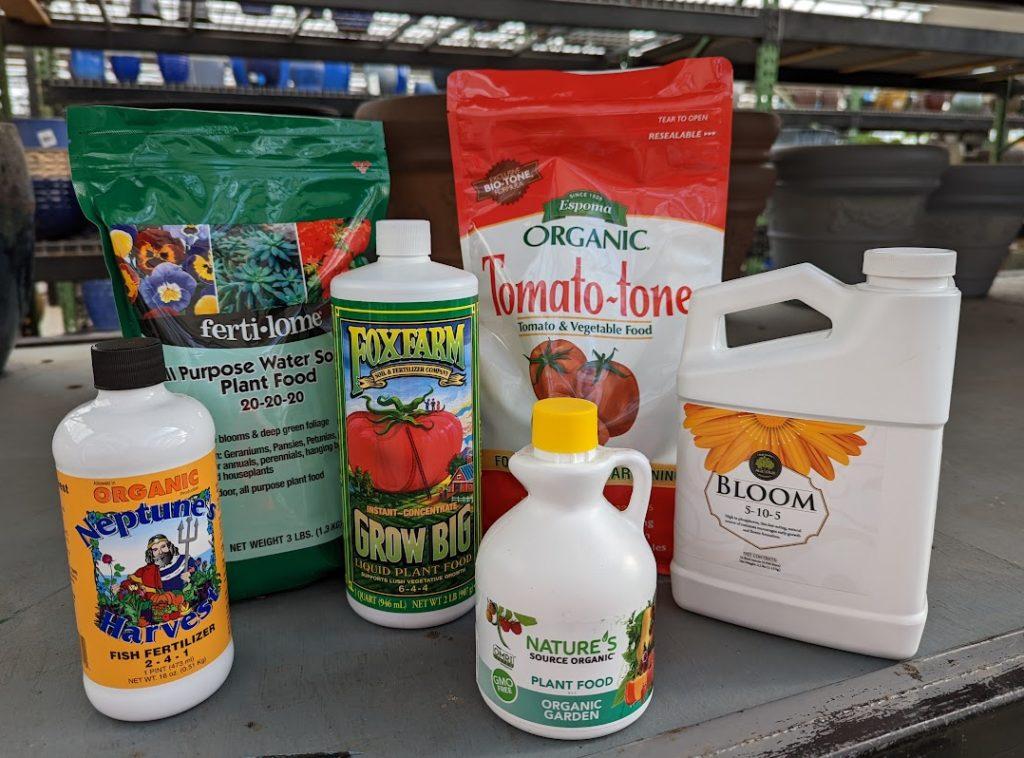
Fertilizing tomatoes and most garden plants in general doesn’t have to be complicated. There are general plant foods, specially-targeted plant foods… liquids or granulars. Tagawas carries lots of choices. Just be sure to use them consistently and according to package directions. Our Garden Advisors will gladly recommend options for your specific needs.
Blossom end what?
As these later weeks of summer play out and the tomato harvest (hopefully!) gets busier, you may find a few problems appearing on the maturing and ripe fruit. Blossom end rot (B.E.R.) is one of the most common.
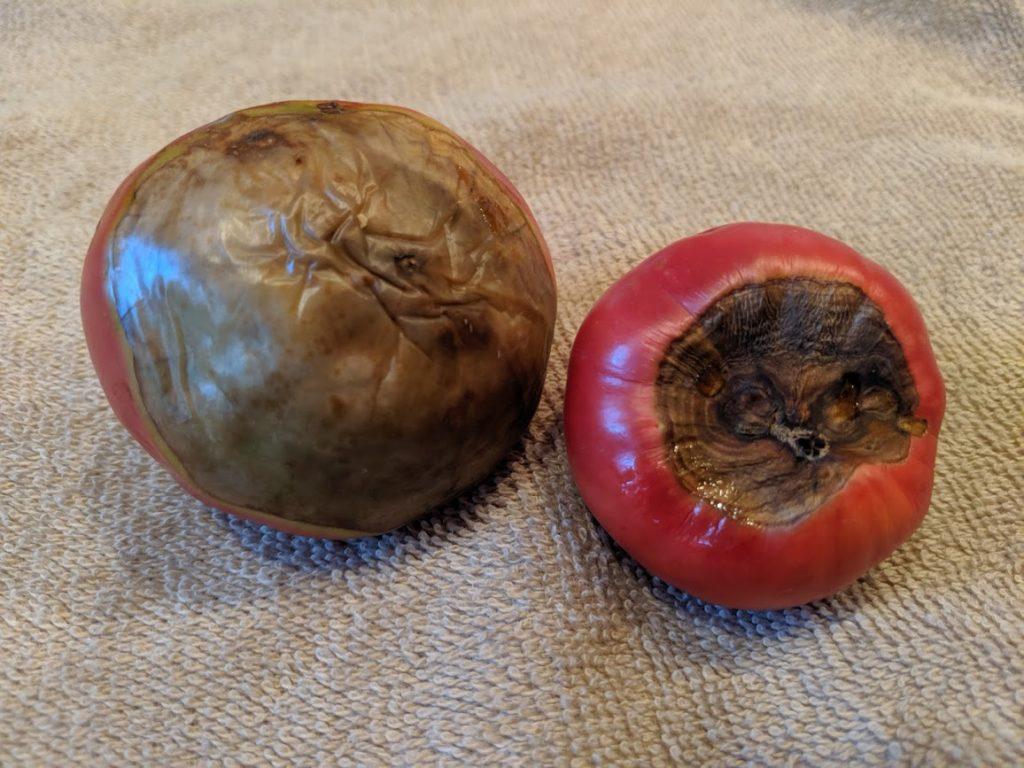
B.E.R. appears as a tannish gray or brown leathery patch on the bottom of the fruit, opposite the stem. The most common cause is uneven moisture to the roots, especially when the plants are allowed to go too dry between waterings. Make sure you’re watering your plants deeply, down to the bottom of their root zone, which can easily be 12″ deep or more. Water your plants normally, then gently check with a trowel to see how far down the moisture is going. Increase the water if the lowest roots are dry.
Mulching the plants can be especially helpful to keep the moisture level more consistent. Our Garden Advisors at Dick’s Corner may also suggest a fertilizer with calcium to help remedy the problem.
There may be some growth cracks in our future
More accurately, in our tomatoes’ future. Several weeks of hot dry weather interrupted by the heavy rains which many of us have received here in mid-August, could cause tomatoes to crack.
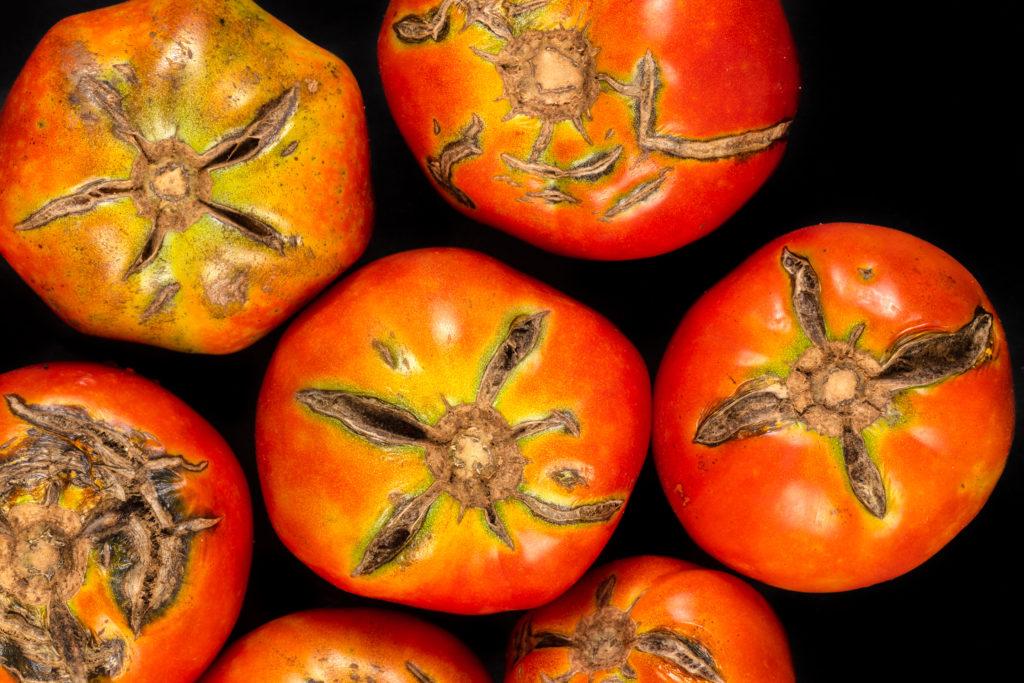
If you’ll pardon the phrase, the fruit is simply “splitting its britches.” When a tomato that’s been growing under “normal” watering conditions suddenly gets two or more inches of rain, it can have a growth spurt that takes in so much water the skin splits.
If the growth cracks are shallow, they can usually be trimmed away, and the fruit will be quite edible. If the cracks are deep, they create an opening for bacteria that begin to decay the interior of the tomato, making it fit for nothing but the compost pile.
And then there are the diseases…
It’s quite common for tomato plants to get a variety of diseases. Diagnosing them generally takes a trained eye. Is it fungal? Bacterial? Is it treatable? Should the plant be removed altogether?
If you have plants that just don’t look right, here’s my best advice: Take a fresh sample of a branch, include leaves, stems and fruit, zip it all up inside a plastic bag and bring it to…. you guessed it! Dick’s Corner at Tagawas!
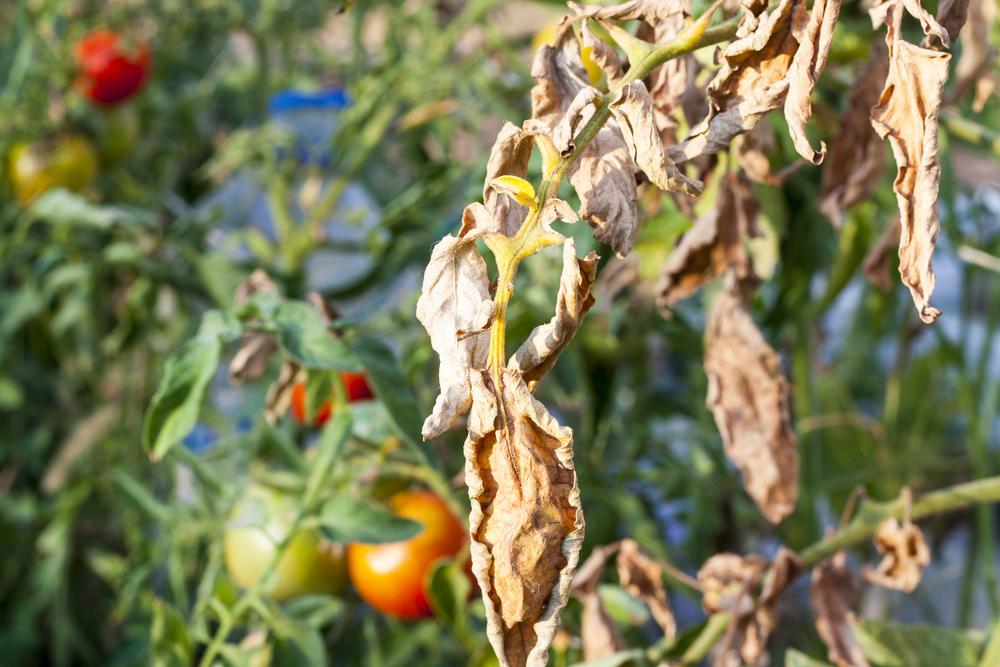
Our Garden Advisors (several of whom are Master Gardeners!) will diagnose it and let you know what to do going forward. No charge!
In addition to bringing a good sample, don’t hesitate to use your smartphone. I’m convinced it’s one of the best gardening tools available when it comes to diagnosing problems! Take pictures of the entire bed and the plant(s) in question. Let us know what you see at home. Pictures that put our Garden Advisors “in your garden” can be a big help toward getting the best advice possible. Stop by Tagawa Gardens today to have our Garden Advisors look at your picture to help you find the best solutions.
